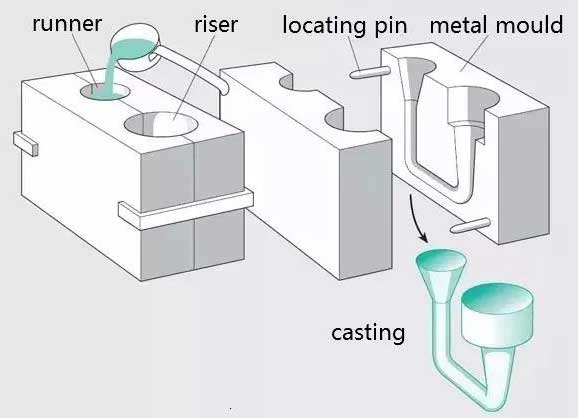What does foundry mean?
Foundry: is the process of smelting metal into a liquid that meets certain requirements and pouring it into a casting mold. After cooling, solidification, and cleaning, a casting (part or blank) of a predetermined shape, size and performance is obtained. The basic technology of the modern machinery manufacturing industry.
Foundry Introduction
The cost of the blank produced by foundry is low, and it can show its economical efficiency for parts with complicated shapes, especially with complicated inner cavities; at the same time, it has wide adaptability and better comprehensive mechanical properties.
But the materials needed for foundry production (such as metal, wood, fuel, modeling materials, etc.) There are many foundry equipments (such as a metallurgical furnace, sand mixer, sand molding machine, core shooting machine, sand falling machine, shot blasting machine, cast iron plate, etc.), And it will produce dust, harmful gases and noise and pollute the environment.
Foundry History
Foundry is a kind of metal thermal processing technology that humans have mastered earlier, with a history of about 6000 years. In 3200 BC, copper frog castings appeared in Mesopotamia. Between the 13th and 10th centuries BC, China has entered the heyday of bronze castings, and the craftsmanship has reached a very high level.
For example, the Simuwu Fangding Ding weighing 875 kg in the Shang Dynasty, the Yizun plate of Zenghou in the Warring States Period and the translucent mirror of the Western Han Dynasty are all representative products of ancient casting.
The early foundry was greatly influenced by pottery. Most of the castings were tools or utensils used in agricultural production, religion, and life, with a strong artistic color. In 513 BC, China cast the world’s first cast-iron found in written records-the the Jin Kingdom cast tripod (approximately 270 kg).
Around the 8th century, Europe began to produce iron castings. After the Industrial Revolution in the 18th century, castings entered a new era of serving large industries.
In the 20th century, the rapid development of foundry has been developed. Nodular cast iron, malleable cast iron, ultra-low carbon stainless steel, aluminum copper, aluminum-silicon, aluminum-magnesium alloy, titanium-based, nickel-based alloy and other casting metal materials have been developed. A new process for inoculation of cast iron.
After the 1950s, new technologies such as green sand high-pressure modeling, chemical hardening sand modeling and core making, negative pressure modeling, and other special castings, shot blasting, etc. appeared.
There are many types of foundry, according to the habit of modeling methods divided into:
①Ordinary sand casting, including 3 types of green sand, dry sand and chemically hardened sand.
②Special casting, according to the modeling material, can be divided into special casting with natural mineral sandstone as the main modeling material. (Such as investment casting, mud casting, shell casting in the foundry, negative pressure casting, solid casting, ceramic casting, etc.)
③Two types of special casting (such as metal mold casting, pressure casting, continuous casting, low pressure casting, centrifugal casting, etc.) with metal as the main casting material.
The foundry process usually includes:
①Preparation of molds (containers that make liquid metal into solid castings). The molds can be divided into sand, metal, ceramic, clay, graphite, etc. according to the materials used.
According to the number of uses, it can be divided into disposable type, semi-permanent type and permanent type. The pros and cons of mold preparation are the main factors affecting the quality of castings;
②The melting and pouring of cast metal, cast metal (casting alloy) mainly includes cast iron, cast steel and cast non-ferrous alloy;
③ Casting processing and inspection. Casting processing includes removal of foreign bodies on the core and surface of castings, removal of pouring risers, shoveling of burrs and drape seams, and heat treatment, shaping, anti-rust treatment and rough machining.
Delin Machinery specializes in the production of the foundry machine. It is a machinery manufacturing enterprise integrating scientific research, design, manufacturing, installation, debugging and consulting services.
You can click here to view more machine product introduction
Machine video:
- DL-3040 automatic horizontal sand molding machine working video
- gravity casting machine working process
- core making machine video
Welcome to Call / WhatsApp or send us Email about any question on the horizontal sand molding machine, please contact us >>>Tel / WhatsApp / WeChat: +86 13960339790, Email: salse16@chinamakeco.com

